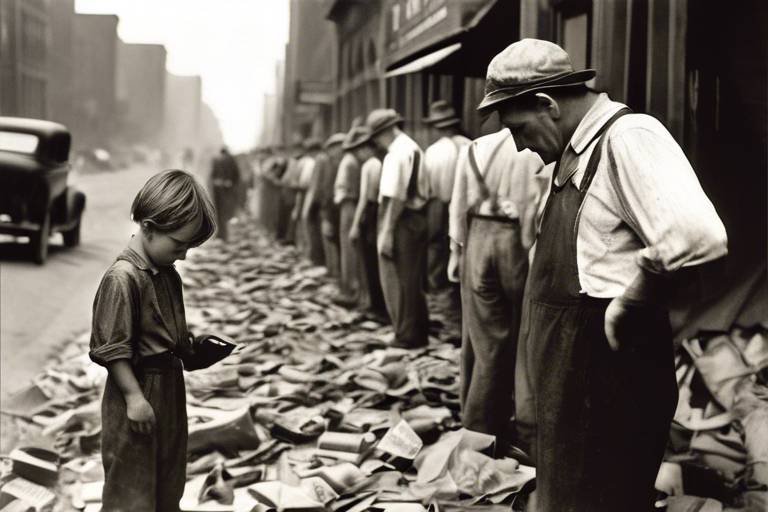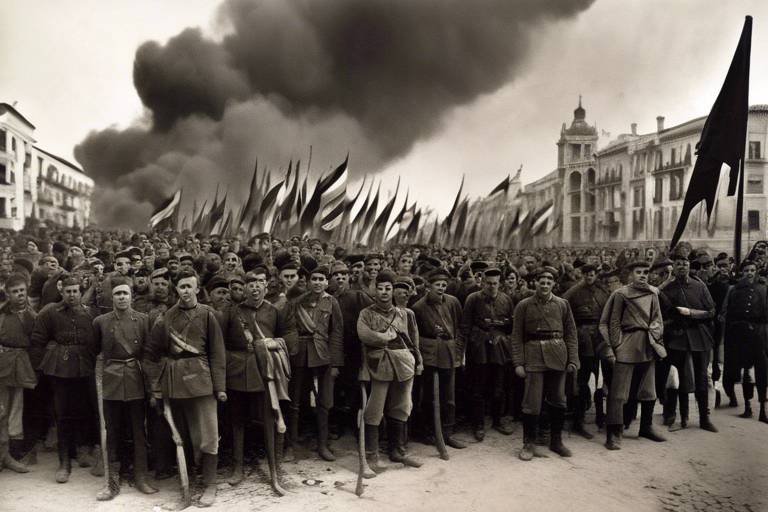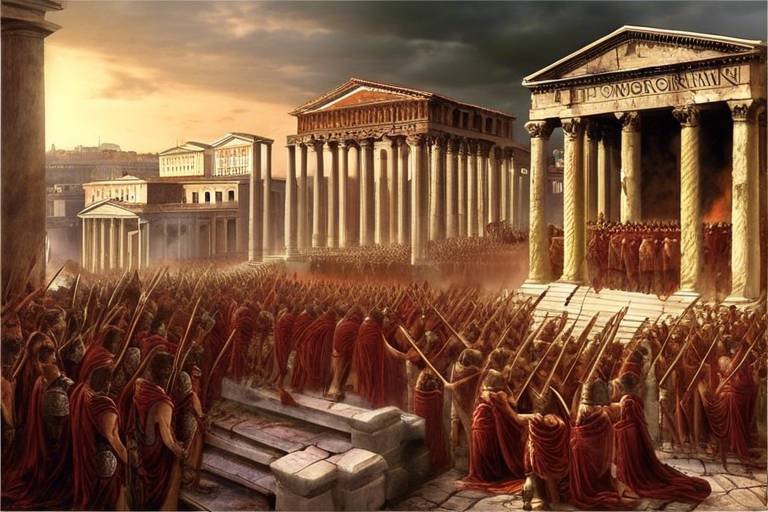The Impact of the Black Death on European Society
The Black Death, one of the most devastating pandemics in history, had a profound impact on European society, leaving a lasting mark on various aspects of life in the region. From demographic shifts to economic disruptions, religious responses, and cultural transformations, the repercussions of this catastrophic event were far-reaching and long-lasting.
One of the most significant consequences of the Black Death was the demographic changes it brought about in Europe. The pandemic led to a drastic population decline, resulting in labor shortages and significant shifts in the social structure of communities. The size and composition of European populations were forever altered, shaping the future of the continent.
As the Black Death ravaged through Europe, it also caused economic upheaval on a massive scale. The labor market faced fluctuations, inflation soared, trade patterns shifted, and industries and commerce underwent restructuring. The economic landscape of Europe was forever changed by the aftermath of the pandemic.
Religious responses to the Black Death were equally impactful, with many questioning their faith in the face of such widespread death and suffering. The rise of religious extremism, changes in religious practices, and shifts in the relationship between the church and society were all consequences of the profound impact of the pandemic on religious beliefs and institutions.
During the 14th century, medical knowledge and practices were limited, leading to ineffective treatments for the Black Death. The long-term effects on medical advancements and public health practices in Europe were significant, as the pandemic highlighted the need for improved healthcare infrastructure and disease prevention strategies.
The Black Death also brought about cultural transformations in Europe, influencing art, literature, and societal attitudes towards death, disease, and the fragility of human life. The pandemic left a lasting imprint on the cultural landscape of medieval Europe, shaping artistic expression and social perceptions for generations to come.
Politically, the Black Death had far-reaching consequences, sparking power struggles, social unrest, and the weakening of feudal systems. The rise of centralized authority and the restructuring of governance and political structures in Europe were direct outcomes of the political turmoil caused by the pandemic.
Reflecting on the enduring legacy of the Black Death in European history, it is evident that the pandemic has shaped collective memory, cultural narratives, and historical perspectives. Understanding the resilience and adaptability of societies in the face of such catastrophic events is crucial in comprehending the lasting impact of the Black Death on European society.

Demographic Changes
Exploring the profound effects of the Black Death, one of the deadliest pandemics in human history, on European society, including demographic shifts, economic changes, religious impacts, and long-term consequences.
During the Black Death, Europe experienced a catastrophic demographic shift as the plague ravaged populations across the continent. The pandemic led to a significant decline in the number of people, resulting in a shortage of labor and a restructuring of social hierarchies. Entire communities were decimated, altering the size and composition of European societies in unprecedented ways.

Economic Disruption
Exploring the profound effects of the Black Death, one of the deadliest pandemics in human history, on European society, including demographic shifts, economic changes, religious impacts, and long-term consequences.
Amid the chaos and devastation wrought by the Black Death, European economies were thrown into disarray. The sudden and significant loss of population had far-reaching consequences on various economic sectors. With a dramatic decline in the workforce due to widespread mortality, labor shortages became rampant, leading to a surge in demand for workers. This imbalance in supply and demand triggered substantial fluctuations in the labor market, with wages skyrocketing as employers competed for scarce labor resources.
Furthermore, the scarcity of laborers resulted in a reorganization of social structures, as peasants and serfs seized the opportunity to negotiate better wages and working conditions. The traditional feudal system, which relied heavily on a servile workforce, began to crumble under the pressure of labor scarcity. This shift in power dynamics reshaped the economic landscape, empowering laborers and challenging the existing hierarchy.
In addition to labor market disruptions, the Black Death precipitated inflationary pressures across Europe. The scarcity of goods and services, coupled with increased demand, led to a surge in prices, eroding the purchasing power of both consumers and producers. The inflationary spiral further exacerbated the economic turmoil, making it challenging for individuals and businesses to maintain financial stability.
Moreover, the Black Death prompted significant changes in trade patterns and commercial practices. The widespread fear of contagion and the disruption of traditional supply chains forced merchants to adapt to new trading routes and practices. As a result, the structure of industries and commerce underwent a profound transformation, with long-lasting implications for European economies.

Religious Responses
When the Black Death swept across Europe, it not only ravaged populations but also shook the foundations of religious beliefs and practices. The devastating impact of the pandemic led to a profound questioning of faith and the very essence of religious convictions. People grappled with the theological implications of such widespread suffering and death, challenging the traditional understanding of divine providence and the nature of God's role in human affairs.
Amidst the chaos and despair, the Black Death also sparked a surge in religious extremism and fervor. Some individuals turned to radical interpretations of doctrine, seeking solace and answers in extreme forms of piety and penance. The crisis fueled apocalyptic visions and millenarian movements, as people sought spiritual meaning in the face of overwhelming mortality and uncertainty.
Furthermore, the Black Death precipitated significant changes in religious practices and rituals. The sheer scale of death necessitated new approaches to burial rites and commemoration, reshaping the ways in which communities honored their deceased. The pandemic also influenced the relationship between the church and society, as religious institutions grappled with the challenge of providing comfort and guidance in the midst of a profound existential crisis.
In the aftermath of the Black Death, the religious landscape of Europe underwent a period of transformation and adaptation. The trauma of the pandemic left a lasting imprint on the collective psyche, influencing cultural attitudes towards mortality, suffering, and the afterlife. The profound religious responses to the Black Death reflected the enduring impact of the crisis on the spiritual and emotional lives of individuals and communities.

Medical Knowledge and Practices
The Black Death, one of the most devastating pandemics in history, struck Europe in the 14th century, causing widespread fear and confusion. During this dark period, medical knowledge and practices were limited, leading to ineffective treatments and desperate attempts to combat the disease. Physicians and healers, lacking understanding of the plague's true nature, resorted to superstitious remedies and practices that offered little relief to the suffering population.
One common belief was that the Black Death was a punishment from God, leading to various religious rituals and penances in an attempt to appease divine wrath. Bloodletting, a popular medical treatment of the time, was believed to balance the body's humors but proved futile in the face of the highly contagious and deadly nature of the plague. The use of herbs, poultices, and other traditional remedies also failed to halt the rapid spread of the disease.
Amid the chaos and desperation, some individuals turned to unconventional methods, such as wearing aromatic herbs or spices to ward off the "miasma" they believed carried the disease. Quarantine measures were implemented in some cities, marking an early form of public health response, although their effectiveness was limited by the lack of scientific understanding of contagion.
As the Black Death ravaged Europe, the medical community struggled to make sense of the mysterious illness, with theories ranging from astrological influences to moral failings as causes of the pandemic. Despite the lack of effective treatments, the experience of the Black Death eventually led to advancements in medical knowledge and practices, laying the foundation for future developments in epidemiology, sanitation, and disease prevention.

Cultural Transformations
When the Black Death swept through Europe like a merciless storm, it not only decimated populations but also left an indelible mark on the cultural fabric of society. The profound impact of this devastating pandemic reverberated through art, literature, and the very essence of how people viewed life and death in medieval Europe.
Artistic expressions underwent a metamorphosis in the wake of the Black Death. The macabre themes of mortality and decay became prevalent in paintings and sculptures, reflecting the pervasive fear and acceptance of death that gripped the population. Artists captured the fragility of life with haunting beauty, portraying the dance of death and the inevitability of mortality in striking imagery.
Literature, too, bore the scars of the pandemic, with writers grappling with themes of suffering, loss, and the transient nature of human existence. Plague narratives emerged as a prominent genre, chronicling the horrors of the Black Death and the emotional turmoil it wrought upon individuals and communities. Poets penned verses of despair and resilience, seeking solace in the face of overwhelming tragedy.
Societal attitudes towards death and disease underwent a profound shift in the aftermath of the Black Death. The once-taboo topics became central to public discourse, shaping cultural norms and rituals surrounding mortality. The specter of the plague lingered in the collective memory, reminding future generations of the fragility of life and the resilience of the human spirit.
The Black Death forced European society to confront its mortality in a visceral way, leaving an enduring legacy of introspection and transformation. The cultural landscape was forever altered by the pandemic, paving the way for new artistic movements, literary themes, and philosophical reflections on the transient nature of human existence.

Political Consequences
The Black Death, with its devastating impact on European society, triggered a series of profound political consequences that reshaped the power dynamics and governance structures of the time. As the population dwindled and social order faltered in the wake of the pandemic, political systems faced unprecedented challenges and transformations.
One significant political consequence of the Black Death was the emergence of power struggles among the ruling elite. With the traditional social hierarchy disrupted by widespread death and economic turmoil, nobles, monarchs, and local authorities vied for control and influence over increasingly scarce resources and labor.
Social unrest and discontent also permeated European societies in the aftermath of the Black Death. The suffering and loss experienced by the population fueled grievances against existing political establishments, leading to uprisings, revolts, and demands for greater representation and rights among the lower classes.
The feudal systems that had long governed much of Europe began to weaken in the face of the demographic and economic challenges brought about by the Black Death. The decline of serfdom, the reorganization of land ownership, and the renegotiation of labor contracts reflected the shifting power dynamics and the erosion of traditional feudal structures.
Furthermore, the Black Death contributed to the rise of centralized authority in many regions as monarchs and rulers sought to consolidate power in the aftermath of the crisis. Centralized states emerged with strengthened bureaucracies, increased control over territories, and efforts to impose order and stability in the midst of post-pandemic chaos.
The impact of the Black Death on governance and political structures in Europe was profound, setting the stage for significant changes in the centuries that followed. The pandemic served as a catalyst for political reconfiguration, social upheaval, and the redefinition of power relationships, leaving a lasting imprint on the political landscape of medieval Europe.

Legacy and Memory
Exploring the profound effects of the Black Death, one of the deadliest pandemics in human history, on European society, including demographic shifts, economic changes, religious impacts, and long-term consequences.
The legacy of the Black Death lingers in the annals of European history like a haunting melody that refuses to fade into oblivion. It serves as a stark reminder of the fragility of human existence and the resilience of societies in the face of unimaginable tragedy. The memory of the Black Death is etched into the collective consciousness of Europe, shaping cultural narratives and historical perspectives for generations to come.
Frequently Asked Questions
- What was the Black Death?
The Black Death, also known as the Bubonic Plague, was one of the deadliest pandemics in human history that swept through Europe in the 14th century, causing widespread death and devastation.
- How did the Black Death impact European society?
The Black Death had profound effects on European society, leading to demographic shifts, economic disruptions, religious responses, cultural transformations, and political consequences that reshaped the fabric of medieval Europe.
- What were the demographic changes caused by the Black Death?
The Black Death resulted in a significant population decline, labor shortages, and changes in social structure, altering the size and composition of European communities and impacting the future development of the region.
- How did the Black Death affect the economy of Europe?
The Black Death triggered economic upheaval in Europe, leading to labor market fluctuations, inflation, changes in trade patterns, and the restructuring of industries and commerce, which had long-lasting effects on the economic landscape of the continent.
- What were the religious responses to the Black Death?
The Black Death prompted varied religious responses, including questioning of faith, rise of religious extremism, changes in religious practices, and shifts in the relationship between the church and society, influencing the spiritual outlook of medieval Europeans.



















